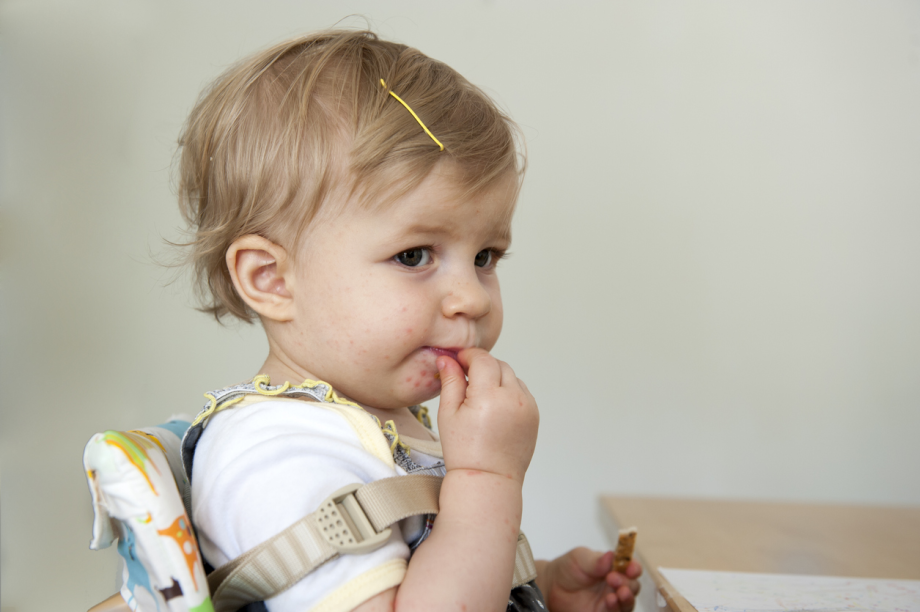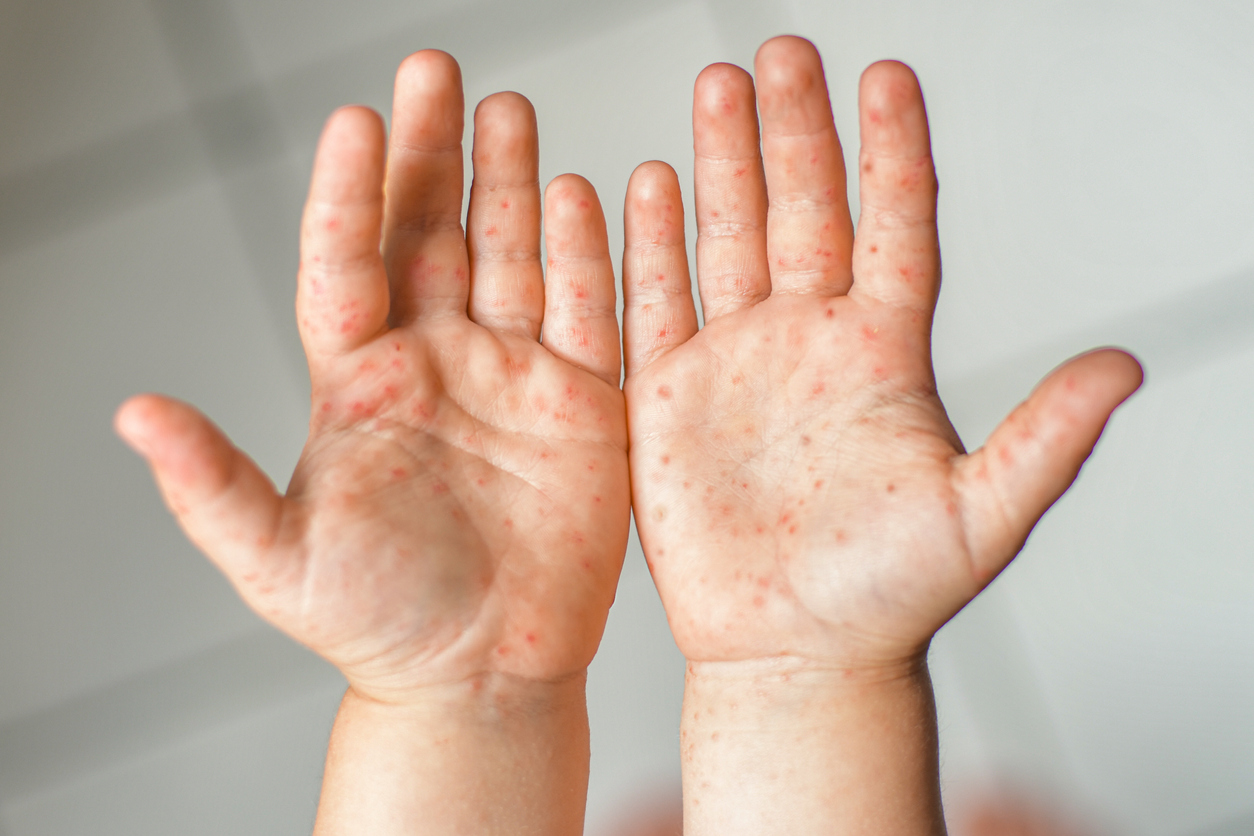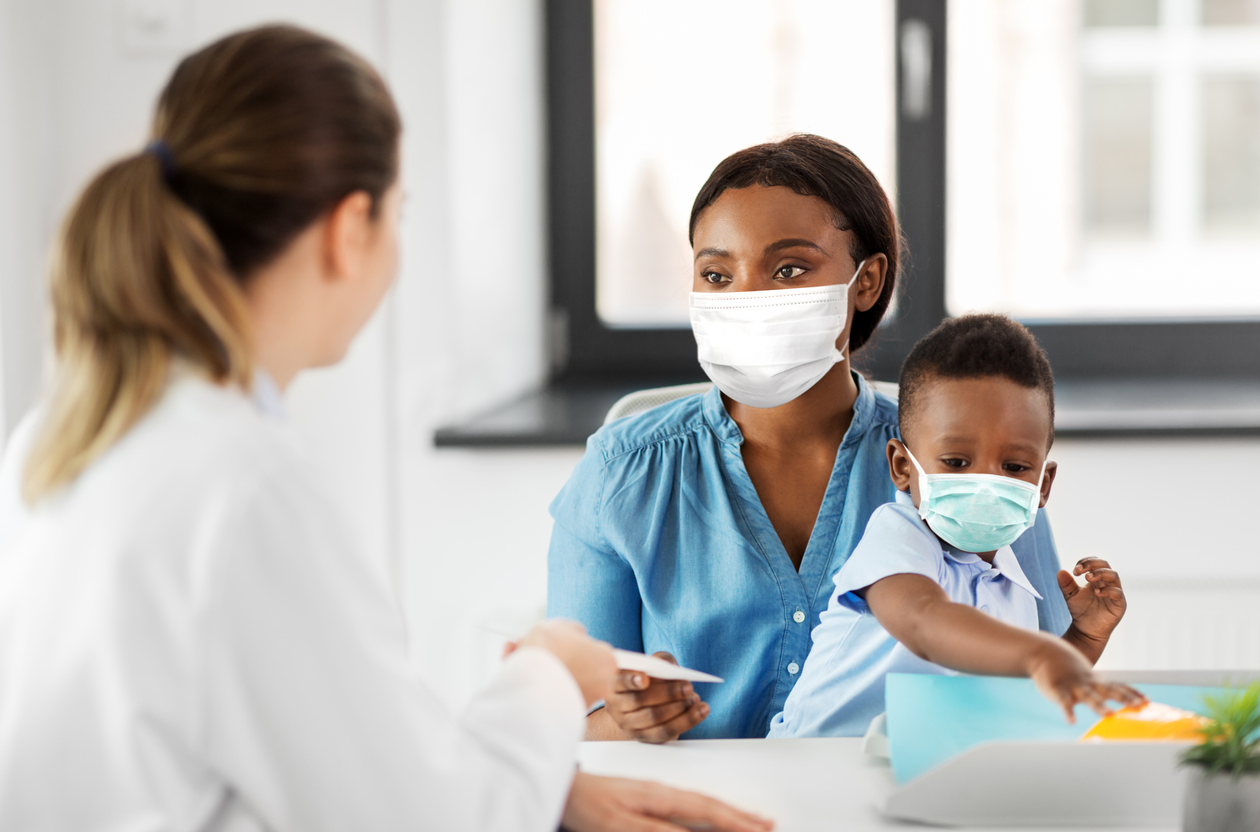What You Need to Know About Hand, Foot and Mouth Disease

It is always stressful when your child is sick, but there is something especially concerning or alarming about red spots entering the equation. While similar to chickenpox in appearance, Hand, Foot and Mouth Disease brings on some added symptoms that will impact your child’s mouth and throat. Moreover, it cannot be prevented with a vaccine. Thankfully, this is an extremely common pediatric illness that is easily treated. We detail what you need to know if you or your child receive this diagnosis.
What is Hand, Foot and Mouth Disease?
Hand, Foot and Mouth Disease (HFMD) is a highly contagious viral infection that is most typically caused by either coxsackievirus A16 or coxsackievirus A6. The telltale signs of this condition are sores and blisters in the mouth and a splotchy red rash on the palms of the hands and soles of the feet. However, the rash can be found anywhere on the child’s body. This can include their torso, extremities, buttocks, and even their genitals. While HFMD is most commonly seen in kids under the age of five, it can impact anyone, especially those with a weakened immune system.
Complications Are Rare
Research has found that “HFMD is in most cases a self-limiting illness, however, a small proportion of cases (less than one percent) develop life-threatening neurological and systemic complications.” This has been the case when the cause of the illness was enterovirus 71. This is most prevalent in the areas of East and Southeast Asia. The CDC notes that “EV-A71 has been associated with more severe diseases such as encephalitis (swelling of the brain).”
The Spread & Prevention of the Virus

Hand, Foot and Mouth Disease spreads through contact with an infected person’s bodily fluids. Thus, sneezing, coughing, kissing, sharing food or drinks with a sick person, or coming in contact with their feces, can all facilitate the spread of this virus.
This makes daycares and childcare facilities very susceptible to outbreaks. While inconvenient, the best way to prevent the spread of this infection is to keep young children at home if you suspect that they may be sick.
Moreover, during the summer and fall months when HFMD is more prevalent, it is important to be vigilant with hand washing and teaching your kids to cover their mouths when they sneeze. Finally, make sure to disinfect shared spaces regularly. This can help to eliminate secretions that may be lurking on surfaces.
Signs & Symptoms of Hand, Foot and Mouth Disease
Before the indicative skin rash and mouth sores arise, a fever is normally the first sign of infection. This is followed by irritability, a poor appetite, and a general feeling of being unwell. After a few days of these less obvious symptoms, the more visual clues will appear quite quickly. The red spots can be itchy and the blisters and ulcers are painful, hence the lack of a desire to eat.
While your child’s pediatrician can do a throat culture or take a stool sample, most of the time, they will diagnose the illness by simply looking at the patient’s throat, hands, and feet. If your child does not exhibit a rash on their extremities, they could also have a very similar condition called Herpangina. This is caused by the same virus, but it only impacts the person’s throat.
Both of these viral infections can last for days to weeks. Parents should expect to see most symptoms subside within ten days. However, due to the contagious nature of this infection, it is best to avoid close contact with others during this time frame.
Treatment of HFMD

Unfortunately, since HFMD is a viral illness, there are no antibiotics or specific treatment for this condition. All you can do is address the symptoms and make your child as comfortable as possible until the infection has run its course.
Since a sore throat is one of the main issues, your doctor will likely prescribe an over-the-counter pain reliever like Tylenol (acetaminophen) or ibuprofen. These will also help with your child’s fever. Numbing throat sprays can help to lessen their discomfort as well. Always consult with your physician to confirm the recommended medications for your child as well as the appropriate dosage for their age and weight. Most importantly, remember to never give your child aspirin.
Hydration is Imperative
Dehydration is a big concern with this illness. Make sure that your child is getting plenty of liquids. Since their throat will be irritated from the painful sores, consider cold beverages and icy treats like Pedialyte popsicles.
In addition, certain fruits like watermelons and berries have an extremely high water content, making them another great option for keeping your child hydrated. However, you will want to avoid acidic foods as well as salty and spicy items that could further irritate the area. For older kids, warm soup and gargling with salt water can also bring some relief.
When to See a Doctor
If symptoms are mild, many parents will forgo seeing a doctor. However, if the symptoms of HFMD prevent your child from drinking fluids, if their fever gets too high, or you do not see an improvement within ten days, it is important to seek medical attention immediately. Additionally, while older children tend to recover with little treatment, it is recommended that babies under six months of age are taken to the doctor the moment symptoms arise.
Best Practices When Diagnosed with Hand, Foot and Mouth Disease
While Hand, Foot and Mouth Disease sounds terrible, most cases are relatively mild and require little to no treatment. The best thing to do if you or your child is diagnosed with this illness is to rest and get plenty of fluids.
The first week is normally the worst, with most people reporting improvements after just a few days. Nonetheless, due to the level of contagiousness, it is best to keep your child off kindergarten and for you to stay home from work until the fever is no longer present and the sores have healed.
Finally, once your child is better, make sure to clean the areas of your home that they use the most. In addition, don’t forget to sanitize toys and other items like pacifiers that may have been in their mouth. Most importantly, replace their toothbrush. These simple steps can help to prevent reinfection and keep other members of the household safe.

